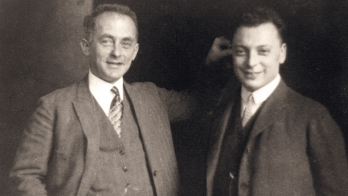By Wojciech Florkowski
World Scientific
Hardback: £66 $96

Wojciech Florkowski’s book on ultra-relativistic heavy-ion collisions appears right at the beginning of a new era in the field. In 2010, two new experimental heavy-ion programmes started at CERN. First, lead nuclei were accelerated to the highest ever energy – 1.38 TeV per nucleon – at the LHC and rich experimental results were released by the ALICE, ATLAS and CMS collaborations, even during the first data-taking period in November/December 2010. Second, in parallel, a new fixed-target heavy-ion programme at CERN’s Super Proton Synchrotron (SPS) was launched with the acceleration of lead beams to the lowest-ever energy in the SPS, namely 13.9 GeV per nucleon. This was to study the use of the fragment separator in producing secondary light-ion beams for the NA61/SHINE experiment. These two research programmes are perfectly complementary. The one at the LHC aims at a systematic investigation of hot and dense quark-gluon plasma. The one at the SPS, on the other hand, will search for the critical point of strongly interacting matter and study the properties of the onset of deconfinement.
This book by Florkowski is highly relevant for all participants in the new programmes at CERN. I am convinced that it may also help all non-heavy-ion physicists involved in experiments at CERN to understand the language and excitement of their heavy-ion colleagues.
Furthermore, it gives an excellent introduction to and an in-depth review of the standard theoretical framework that is used to interpret the heavy-ion data. It provides a clear, logical and unified description of statistical, hydrodynamical and kinetic models. All this is illustrated by a selection of the most relevant experimental results of the past programmes at Brookhaven’s Alternating Gradient Synchrotron and Relativistic Heavy Ion Collider, as well as at the SPS. Finally, there are various exercises in each chapter for use as a textbook in a graduate course.
All in all, this book is highly recommendable both for heavy-ion and non-heavy-ion physicists.








